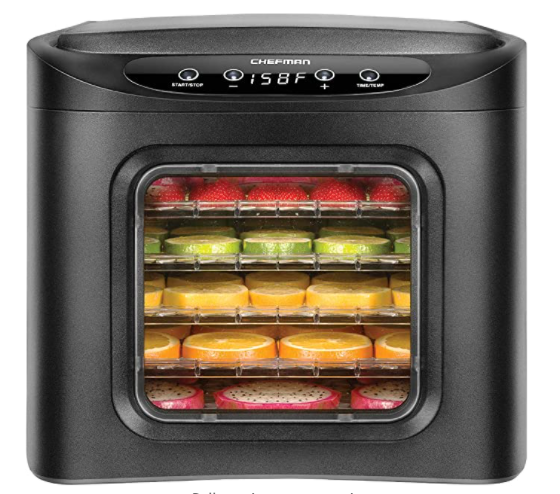Lavender is a highly versatile herb that, for decades, has been prized for its medicinal, aesthetic, and aromatic values.
It’s believed to have originated from the Mediterranean; where some of its earliest recorded uses included being used in the mummification process. This was in Egypt.
In Rome, Persia, and ancient Greece, lavender assumed the role of bath additive as many believed that it purifies the mind and the body.
To date, lavender is still a preferred herb by many who use it for medicinal and culinary purposes.
Lavender in traditional medicine
Other than being used as a bath additive, lavender flowers were also used (by the ancient people) to ward off diseases. They did that by scattering the flowers inside their homes.
Today, the strong fragrance of the lavender plant is still heavily used in aromatherapy—to help induce sleep, soothe headaches, reduce scarring, and ease the pain from insect bites and burn-related pains.
Lavender Plants
There are several varieties of this mint-family herb, but the most common one is the Lavandula angustifolia, belonging to the English Lavenders. This species thrives in the USDA zone 5-8 and is the most widely used in cooking.
There is also Lavandula latifolia (cultivated in USDA zone7) and Lavandins.
Lavandins are hybrids resulting from the crossing of Lavandula latifolia and Lavandula angustifolia—and are mostly cultivated for commercial use in cosmetics and ornamental purposes in gardens.
Breeds of the Lavandula angustifolia variety include dwarf forms like Grey Lady and Thumbelina Leigh, which are both hardy to USDA zones 5-9.

Lavender Growing and Care Instructions
Grow lavender outdoors or indoors—in the ground or pots. Regardless of how you plant this herb, it will still thrive.
In the garden, lavender makes a perfect edging tool, and you can as well use it for ornamental purposes to make your herb garden more colorful and attractive.
Growing Needs
Lavender thrives best in well-drained, poor to moderately-fertile soil with a neutral to slightly alkaline pH levels.
It enjoys full sun but may require the afternoon shade to thrive even better, especially in hot summer climates.
Plant in early Summer or Spring if you hail from an area colder than zone 6—that is, zones 6-1. If it’s a warm zone (zones 7-10), plant in early Fall for an enhanced root establishment during the cool and moist winter weather.
Ensure a spacing of 2-3 feet when planting to allow each lavender plant access to maximum sunlight levels as required. Remember, the more sun the plant receives, the greater the blooms and the stronger the fragrance from the foliage.
Growing Lavender (Care Tips)
Lavender grows best with just a little of your care. This relatively unfussy herb does well when left to its own with just a little touch from you.
Watering
Water deeply but infrequently—to avoid stressing the plant and to prevent rotting.
Skip watering when the ground is wet. This is especially if you reside in an area that experiences frequent rains during summer.
Rule of Thumb: Wait until the soil dries up before watering your lavender again.
Fertilizing
Fertilize in early spring, and do it only once. Just like with water, lavender requires a small amount of fertilizer to thrive.
Simply mix some bone meal with compost and work it into the soil surface around your lavender plant(s). Once done, give a deep watering.
Mulching
Lavender is drought tolerant and in most cases won’t require mulching. However, if you decide to mulch, use small-sized gravel or bark and leave some inches clear around the crown of the plant to prevent rotting.
Pruning
Pruning helps keep the plant in shape and encourages new healthy growth. It’s the simplest and most effective way to ensure your herb garden stays alive throughout the years.
Cut back the woody stems by 1/3 to enhance the blooming process. Just like other woody plants, lavender blossoms best and put forth the most fragrant foliage from young stems.
Harvesting Lavender
Harvesting of the stems should be done when about half of the buds have opened. The best time to harvest is late morning when the dew has dried up—just before it gets too hot. This is also the time when the plant’s fragrance is the strongest.
Consider cutting the stems as long as possible to make it easier to secure them together (in bundles) using rubber bands.
Select a cool dark place with adequate air circulation to dry your bundles of lavender.
How to Dry Lavender
Drying helps prevent the growth of molds and rot and is also a great way to prolong the herb’s lifespan once picked from the herb garden.
Below are the four ways to dry lavender:

a) Hang to dry
Depending on your humidity; you should have your lavender dry within 7-10 days. Use rubber bands to tie the herb in bunches then hang upside down in a dark, warm location. Keeping your drying lavender away from sunlight helps retain its color and scent, and placing a sheet underneath the bundles will help catch any blooms or buds that might fall.
b) Flat drying
It’s also known as counter drying and is the simplest way to dry lavender stalks.
Take your cut stalks and lay them flat on a dry table or countertop. A drying rack or an old newspaper can as well do the trick. Once dry, the flowers will feel brittle.
c) Drying by electric dehydrator
This process takes up to 2 hours. Just ensure that your food dehydrator is on herbal setting and let it work for the two hours.
After that, assess the stalks. Once dry, the stems, leaves, and the flowers should be brittle. If it comes out moist, consider leaving it for another one hour to dry.
Remove from the dehydrator tray once the drying is done and allow it to cool completely. After that, transfer the dried stalks into a container and close it up tightly.
Note: Efficiency of food dehydrators vary to a great extent, and so, be sure to follow your manufacturer’s instructions.

d) Oven drying
Set the oven at 100 degrees Celsius. Place a single layer of lavender on a baking sheet and heat it for about 10-15 minutes. Ensure the oven’s door is slightly open during the drying process. This opening allows for the free and effective escape of moisture.
Remove from the oven once dry and allow it to cool completely before storage. Here is a more detailed step-by-step guide on oven drying your herbs.
Cooking with Lavender
A centuries-old staple of all French kitchens, many French include this herb in their kitchen garden. Indeed, every part of the lavender can be used in cooking. Feel free to use the leaves, stem, and bud.
Although the leaves and flowers can be used fresh, the stems and buds should be used dry.
Drying in most cases will intensify the herb’s flavor, and so be sure to use the dried buds sparingly. Add it to your recipe bit by bit until you achieve the right balance. It works wonderfully but is often overlooked as a spice rub for meats and poultry.
Excessive use of lavender in a recipe can make you feel like you’re eating a perfume, and even make your dish bitter—which is due to the herb’s intensified scent.
Hint: For culinary usage, choose the edible organic lavender flowers as opposed to the fragrance-grade lavender. Also, avoid using lavender from an unknown source (especially for cooking) as it may carry harmful chemicals.
The Takeaway on Growing Lavender for Your Enjoyment
Tending your herb garden not only accords you a sense of self-accomplishment but is also a great way to ensure that you keep track of what you consume to stay healthy.
To get the best of lavender, choose and grow the variety that best suits your needs. And, of course, this will greatly depend on your USDA growing zone.
For instance, if you’re after an energy boost, stick with Lavandula stoechas (the Spanish lavender). It exhibits a eucalyptus-like scent and comes with an energizing effect.
Lavandula angustifolia (the popular English lavender) works best for those after calm and relaxation.
To enjoy your lavender all year round, consider storing only when completely dry using an airtight container. Keep in a dark place as exposing it sunlight can lead to color change and possibly, decay.

